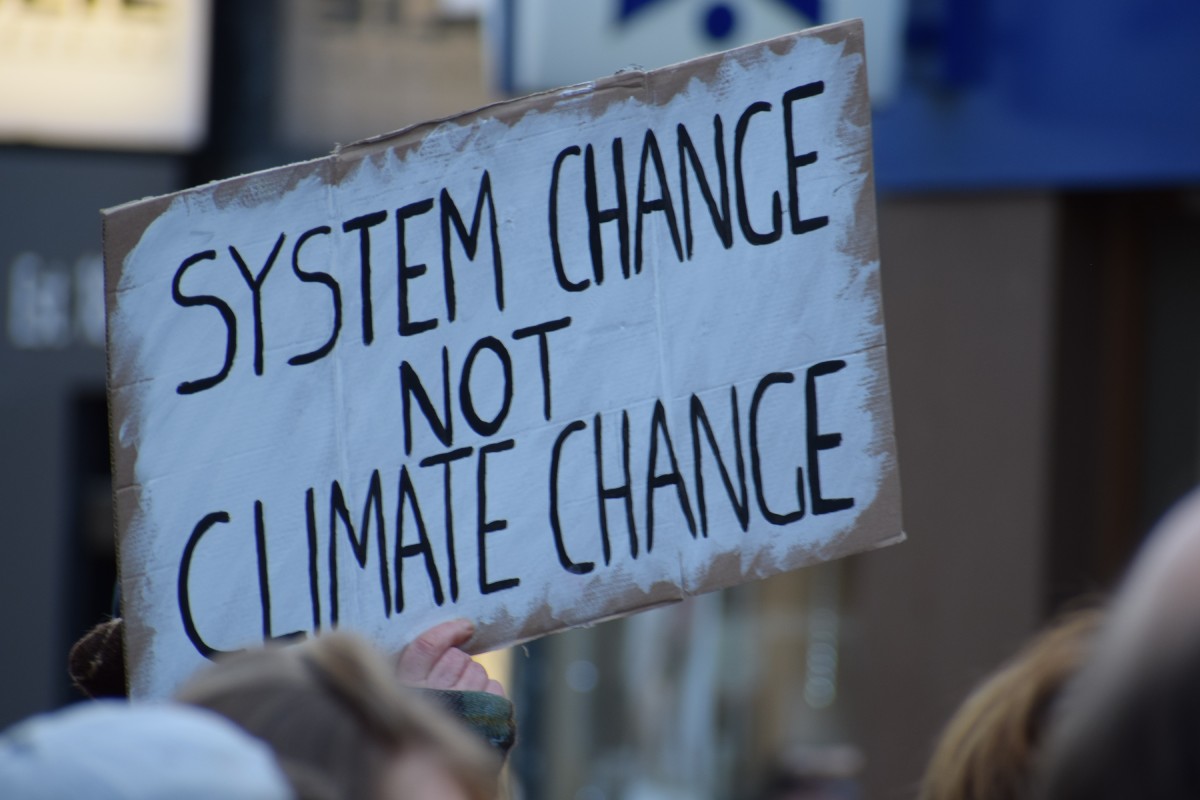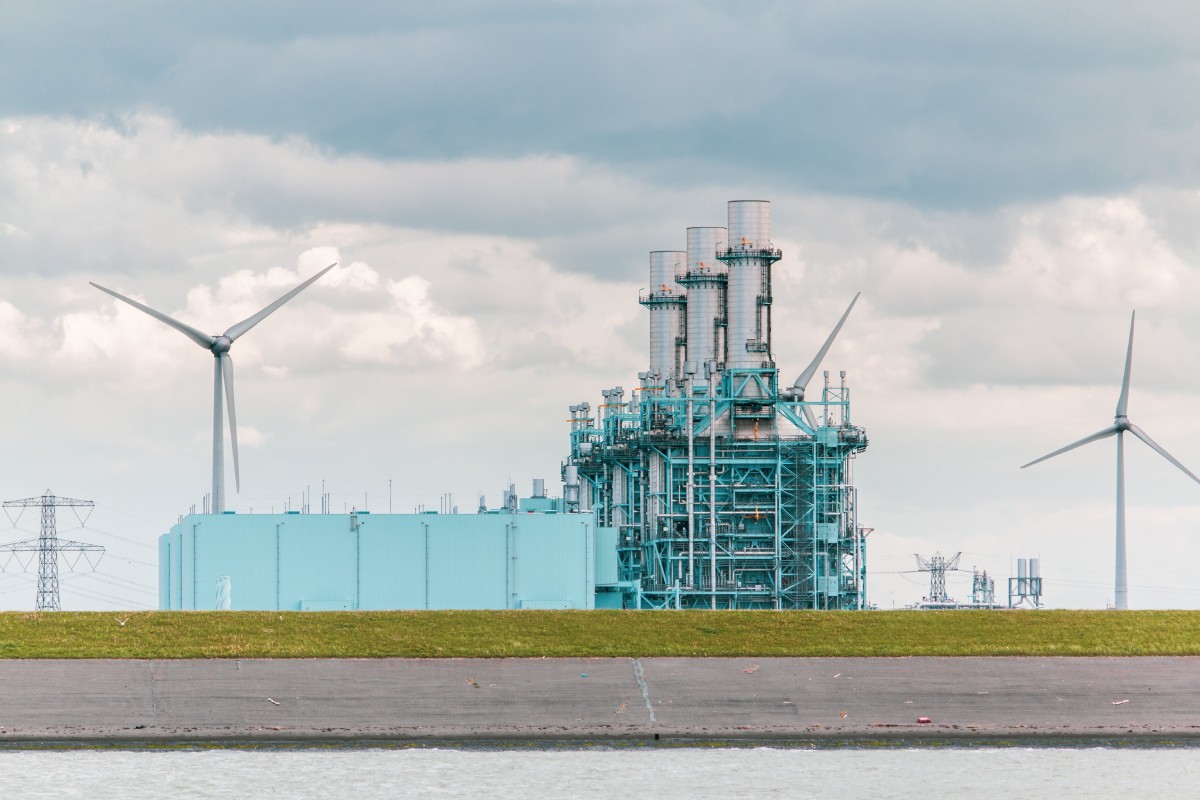Introduction
Carbon offsetting is vital in combating climate change by providing a mechanism to address and mitigate carbon emissions. In this section, we will define carbon offsetting and highlight the importance of tackling carbon emissions to combat the effects of climate change.
Definition of Carbon Offsetting
Carbon offsetting refers to compensating for carbon emissions generated by human activities by investing in projects that reduce or remove an equivalent amount of greenhouse gases from the atmosphere. It involves supporting initiatives with a positive environmental impact, such as renewable energy projects, reforestation efforts, or energy efficiency programs. The goal is to balance out the carbon footprint of individuals, businesses, or events by offsetting their emissions elsewhere.
Importance of Addressing Carbon Emissions in Combating Climate Change
Climate change, driven primarily by the accumulation of greenhouse gases in the atmosphere, poses significant threats to our planet and its inhabitants. Burning fossil fuels, deforestation, and various industrial processes contribute to releasing carbon dioxide (CO2) and other greenhouse gases into the atmosphere. These emissions trap heat and lead to global warming, resulting in rising temperatures, melting ice caps, extreme weather events, and ecosystem disruptions.
Addressing carbon emissions is crucial in combatting climate change because it directly targets the root cause of global warming. By reducing the concentration of greenhouse gases in the atmosphere, we can mitigate the adverse effects and work towards creating a more sustainable and resilient future. Carbon offsetting provides a practical and immediate solution to offset emissions that are challenging to eliminate in the short term, such as those from transportation, manufacturing, and agriculture.
We can take responsibility for our carbon footprint and actively contribute to reducing greenhouse gas emissions through carbon offsetting. It allows individuals, businesses, and organizations to support projects that promote renewable energy, protect forests, enhance energy efficiency, and implement sustainable practices. Investing in these initiatives can help counterbalance our emissions and contribute to global efforts to combat climate change.
In the following sections, we will delve deeper into the concept of carbon offsetting, its environmental impact, the role of businesses and individuals, as well as the challenges and opportunities associated with this critical climate mitigation strategy.
Understanding Carbon Offsetting
In this section, we will delve into the intricacies of carbon offsetting, exploring how it works, the various types of carbon offset projects, and the concept of carbon credits and offsetting calculations.

Explanation of How Carbon Offsetting Works
Carbon offsetting operates on balancing out carbon emissions by investing in projects that reduce or remove an equivalent amount of greenhouse gases from the atmosphere. The process involves four main steps:
-
Measuring Emissions: the carbon emissions associated with a particular activity or entity are quantified. This can include emissions from transportation, energy consumption, manufacturing processes, or any other source.
-
Setting a Baseline: A baseline is established to determine the emissions that need an offset. This baseline represents the amount of emissions that would occur without any mitigation efforts.
-
Investing in Offset Projects: To offset the calculated emissions, investments are made in projects that reduce or remove greenhouse gases from the atmosphere. These projects can include renewable energy installations, reforestation initiatives, methane capture from landfills, or energy efficiency programs.
-
Verification and Certification: The offset projects undergo rigorous verification and certification processes to ensure their legitimacy and the accuracy of their emissions reductions. Independent third-party organizations review and validate the projects, ensuring they meet specific standards and protocols.
Different Types of Carbon Offset Projects
Carbon offset projects encompass many initiatives that contribute to reducing or removing greenhouse gases. Some common types of projects include:
-
Renewable Energy: Investing in renewable energy projects, such as wind farms, solar installations, or hydroelectric plants help replace fossil fuel-based energy sources and reduce CO2 emissions.
-
Reforestation and Afforestation: Supporting initiatives that focus on planting trees or restoring forests help sequester carbon dioxide through photosynthesis, effectively removing CO2 from the atmosphere.
-
Energy Efficiency: Projects that promote energy efficiency, such as upgrading buildings with insulation, implementing energy-saving technologies, or improving industrial processes, helps reduce energy consumption and the associated carbon emissions.
-
Methane Capture: Landfills and livestock operations produce methane, a potent greenhouse gas. Methane capture projects collect and utilize methane for energy generation, preventing its release into the atmosphere.
The Concept of Carbon Credits and Offsetting Calculations
Carbon offsetting revolves around the concept of carbon credits. A carbon credit represents one tonne of CO2 (or equivalent greenhouse gas) reduced or removed from the atmosphere through an offset project. These credits serve as a measurable and tradable unit of emission reduction.
Offsetting calculations involve determining the number of carbon credits required to offset a specific amount of emissions. This calculation depends on factors such as the type and quantity of emissions, the quality and scale of the offset project, and the specific offsetting standards and protocols being followed.
Individuals, businesses, and organizations effectively finance emission reduction projects and take responsibility for their carbon footprint by investing in carbon credits. The credits represent tangible contributions to the global efforts of combating climate change, facilitating the transition to a low-carbon economy.
The Environmental Impact of Carbon Offsetting
In this section, we will explore the significant environmental impact of carbon offsetting, including the reduction of greenhouse gas emissions, its contribution to global efforts in mitigating climate change, and examples of successful carbon offset projects and their impact.

Reduction of Greenhouse Gas Emissions
One of the primary objectives of carbon offsetting is the reduction of greenhouse gas emissions, particularly carbon dioxide (CO2) emissions. By investing in offset projects, carbon offsetting helps to counterbalance the emissions generated by various human activities. These projects actively work towards reducing or removing greenhouse gases from the atmosphere, effectively curbing the negative impacts of climate change.
Through initiatives like renewable energy projects, reforestation programs, and energy efficiency measures, carbon offsetting enables the displacement of fossil fuel-based energy sources, the sequestration of carbon through the growth of trees and plants, and the optimization of resource usage. These actions result in a substantial decrease in greenhouse gas emissions and contribute to the overall stabilization of our climate.
Contribution to Global Efforts in Mitigating Climate Change
Carbon offsetting plays a crucial role in global efforts to combat climate change. As countries, businesses, and individuals strive to reduce their carbon footprints, carbon offsetting allows them to take immediate action and make a positive impact. Individuals and organizations actively participate in emission reduction measures by investing in offset projects, regardless of their geographical location or specific circumstances.
Carbon offsetting allows for the global distribution of efforts, addressing emissions where it is most efficient and practical. It offers a flexible approach, enabling the allocation of resources to projects that have the most substantial impact on reducing greenhouse gas emissions. This collective commitment to carbon offsetting contributes to the overall goals of mitigating climate change and working towards a more sustainable future.
Examples of Successful Carbon Offset Projects and Their Impact
Numerous examples of successful carbon offset projects have made a significant environmental impact. Here are a few notable examples:
-
Renewable Energy Initiatives: Investments in large-scale wind farms and solar energy installations have displaced fossil fuel-based electricity generation, resulting in substantial emissions reductions. These projects have helped transition regions and countries to cleaner and more sustainable energy sources.
-
Forest Conservation and Restoration: Reforestation projects and efforts to protect existing forests have effectively sequestered carbon dioxide. By preserving and restoring forested areas, these projects not only remove CO2 from the atmosphere also supports biodiversity and ecosystem health.
-
Cookstove Programs: In many developing regions, traditional cooking methods involve burning wood or biomass, leading to significant emissions. Carbon offset projects that distribute efficient cookstoves have reduced emissions, improved indoor air quality, and enhanced the well-being of communities.
-
Methane Capture from Landfills: Landfills are a significant source of methane emissions. By implementing methane capture projects, where methane gas is collected and utilized for energy generation; emissions are reduced while simultaneously harnessing a valuable energy resource.
These examples highlight the diverse range of projects that carbon offsetting supports, each contributing to emissions reductions and sustainable development in their respective areas.
Through carbon offsetting, individuals, businesses, and governments can actively participate in the fight against climate change and make a positive difference in the environment. In the following sections, we will explore the benefits and challenges associated with carbon offsetting, as well as the importance of transparency and accountability in ensuring the effectiveness of offset projects.
The Role of Businesses and Individuals
In this section, we will explore the crucial role that businesses and individuals play in carbon offsetting initiatives. We will discuss how businesses can incorporate carbon offsetting into their sustainability strategies, ways individuals can participate in offset projects and the significance of collective action in achieving meaningful results.

How Businesses Can Incorporate Carbon Offsetting
Businesses are responsible for addressing climate change, as their operations often contribute to greenhouse gas emissions. By incorporating carbon offsetting into their sustainability strategies, companies can take proactive steps towards reducing their environmental impact and demonstrating their commitment to combating climate change.
Businesses can embrace carbon offsetting by conducting a comprehensive assessment of their carbon footprint. This involves calculating the emissions produced from their operations, including energy consumption, transportation, and supply chains. With this information, businesses can identify areas where emissions can be reduced through internal efficiency measures, such as energy-saving initiatives and process optimization.
Businesses can invest in high-quality carbon offset projects to offset their remaining emissions. These projects align with their values, support local communities, and have measurable environmental benefits. By financially supporting these projects, businesses contribute to reducing or removing an equivalent amount of carbon emissions from the atmosphere, effectively neutralizing their carbon footprint.
In addition to mitigating emissions, businesses can also leverage carbon offsetting as an opportunity to engage with stakeholders and demonstrate their environmental leadership. They can communicate their commitment to carbon neutrality, inspire other businesses to follow suit and foster a culture of sustainability within their industries.
Ways Individuals Can Participate in Carbon Offsetting Initiatives
Individuals also have a critical role to play in carbon offsetting initiatives. While businesses may have a larger carbon footprint, individual actions collectively significantly impact global emissions. Individuals can actively contribute to climate solutions by participating in carbon offsetting and helping drive positive change.
Individuals can participate in carbon offsetting by calculating and offsetting their carbon footprint. Online calculators can help estimate their emissions from activities like home energy use, transportation, and lifestyle choices. Individuals can then support carbon offset projects to balance emissions and achieve carbon neutrality.
Another way individuals can engage in carbon offsetting is by supporting reputable organizations and projects that align with their values. They can contribute financially to initiatives focusing on renewable energy, reforestation, or sustainable agriculture. By doing so, individuals become active stakeholders in the fight against climate change and promote the growth of impactful carbon offset projects.
The Significance of Collective Action
While individual efforts are crucial, collective action is essential for achieving meaningful results in combating climate change. Carbon offsetting serves as a mechanism for collective action, allowing businesses and individuals to pool resources and substantially impact emissions reduction.
Businesses and individuals can amplify their efforts and contribute to larger-scale initiatives by collaborating and supporting carbon offset projects. This collective action not only accelerates the pace of emission reductions but also promotes collaboration, knowledge sharing, and innovation in the field of sustainability.
Moreover, collective action in carbon offsetting sends a powerful message to policymakers, urging them to prioritize climate change mitigation strategies and create supportive frameworks for sustainable practices. It demonstrates a strong demand for environmentally responsible actions. It encourages the adoption of policies that incentivize and promote carbon offsetting.
In conclusion, businesses and individuals play vital roles in carbon offsetting initiatives. By incorporating carbon offsetting into their sustainability strategies, companies can reduce their carbon footprint and inspire others to follow suit. Individuals can actively participate in carbon offset projects, offset their emissions, and contribute to collective action. Together, businesses and individuals can drive positive change, accelerate the transition to a low-carbon economy, and combat climate change for the benefit of current and future generations.
Criticisms and Challenges of Carbon Offsetting
This section will address some of the criticisms and challenges associated with carbon offsetting. While carbon offsetting plays a valuable role in mitigating climate change; it is essential to acknowledge and address concerns to ensure the effectiveness and credibility of offset projects.

Addressing Concerns about Effectiveness and Credibility
One common criticism of carbon offsetting is the question of its effectiveness in achieving real emissions reductions. Skeptics argue that offset projects may not consistently deliver the expected environmental benefits, leading to concerns of “ greenwashing” or the false perception of sustainability. To address this, it is crucial to ensure that carbon offset projects are carefully selected, properly monitored, and adhere to recognized standards and certifications.
To enhance the credibility of carbon offset projects, transparency is critical. Clear and accessible information should be provided regarding the methodologies used, the project’s impact, and the verification process. This transparency allows stakeholders to make informed decisions about which projects to support. It helps build trust in the effectiveness of carbon offsetting as a climate mitigation strategy.
The Need for Transparency and Accountability
Another challenge in the carbon offset market is transparency and accountability. With the increasing popularity of carbon offsetting, there is a risk of insufficient oversight and regulation. To address this, robust standards and certifications have been developed to ensure the integrity and credibility of offset projects. These standards, such as the Verified Carbon Standard (VCS) and the Gold Standard, provide guidelines and criteria for evaluating and certifying projects, ensuring they deliver genuine emission reductions and sustainable co-benefits.
Furthermore, stakeholders should demand transparency and accountability from offset project developers and carbon offset providers. This includes disclosure of project details, emission reduction methodologies, and third-party verification reports. By promoting transparency and accountability, we can ensure that carbon offset projects meet the highest standards and contribute effectively to climate change mitigation.
Complementing Carbon Offsetting with Emission Reductions
While carbon offsetting is a valuable tool in combating climate change, it is essential to recognize its limitations. Carbon offsetting should not be viewed as a substitute for emission reductions but rather as a complementary strategy. The primary focus should always be reducing emissions at the source and implementing sustainable practices to minimize our carbon footprint.
To maximize the effectiveness of carbon offsetting, it is essential to prioritize emission reduction efforts within organizations, industries, and communities. We can directly reduce greenhouse gas emissions by adopting energy-efficient technologies, transitioning to renewable energy sources, and implementing sustainable practices. Carbon offsetting should be seen as a mechanism to offset the emissions that cannot be eliminated immediately, allowing us to achieve a net reduction in carbon emissions.
In conclusion, it is crucial to acknowledge and address the criticisms and challenges surrounding carbon offsetting. By ensuring the effectiveness and credibility of offset projects through transparency, accountability, and adherence to recognized standards, we can mitigate concerns and build trust in the value of carbon offsetting. Moreover, it is essential to remember that carbon offsetting should complement, not replace, emission reduction efforts. By prioritizing emission reductions and implementing sustainable practices, we can minimize our carbon footprint and work towards a more sustainable and low-carbon future.
Carbon Offsetting and a Sustainable Future
This section will explore the role of carbon offsetting within a broader sustainability framework. Carbon offsetting not only helps mitigate climate change but also contributes to driving innovation, promoting renewable energy transition, and fostering a more sustainable future.

Carbon Offsetting as Part of a Sustainability Framework
Carbon offsetting plays a vital role in achieving broader sustainability goals. By investing in offset projects, businesses and individuals can take responsibility for their carbon emissions and actively contribute to reducing their environmental impact. Incorporating carbon offsetting into sustainability strategies demonstrates a commitment to addressing climate change while promoting a holistic approach to sustainability.
Synergies between Carbon Offsetting and Renewable Energy Transition
Significant synergies exist between carbon offsetting and the transition to renewable energy sources. While renewable energy adoption directly reduces greenhouse gas emissions; carbon offsetting can be used to compensate for emissions that are challenging to eliminate, such as those from specific industrial processes or transportation. By supporting renewable energy projects alongside carbon-offsetting efforts, we can accelerate the transition to a low-carbon economy and maximize the overall environmental impact.
Renewable energy projects often involve a combination of carbon offsetting and clean energy generation. For instance, wind farms or solar installations can offset their operational emissions by investing in offset projects, making them genuinely carbon-neutral or even carbon-negative. This integrated approach helps drive innovation in renewable energy technologies and encourages the development of sustainable energy solutions.
Driving Innovation and Green Technologies
Carbon offsetting has the potential to drive innovation and the development of green technologies. As the demand for offset projects increases, there is a growing need for innovative solutions to deliver tangible emission reductions and sustainable co-benefits. This demand stimulates research and development efforts, creating new technologies, methodologies, and best practices in emissions reduction and carbon sequestration.
Additionally, carbon offsetting encourages investment in green technologies and sustainable practices. The financial resources generated from offsetting activities can be reinvested in research, development, and implementation of clean technologies, such as renewable energy, energy efficiency, and carbon capture and storage. This promotes a cycle of innovation and sustainability, driving advancements in green technologies and contributing to a more sustainable future.
In conclusion, carbon offsetting is crucial in a broader sustainability framework. It aligns with renewable energy transition efforts, driving innovation and promoting the development of green technologies. By incorporating carbon offsetting into sustainability strategies, businesses and individuals can actively contribute to combating climate change and fostering a more sustainable future. Carbon offsetting and renewable energy adoption can create synergistic effects, accelerating the transition to a low-carbon economy and enabling a more sustainable and resilient planet for future generations.
Conclusion
In this blog post, we have explored the vital role of carbon offsetting in combating climate change. Let’s recap the key points discussed and emphasize the importance of supporting and participating in carbon offset initiatives.

The Importance of Carbon Offsetting in Combating Climate Change
Carbon offsetting offers a practical solution for addressing carbon emissions and mitigating climate change. Investing in offset projects can neutralize our carbon footprint and contribute to global efforts to reduce greenhouse gas emissions. Carbon offsetting allows us to take immediate action while we work towards transitioning to a low-carbon economy.
Through offsetting, we can significantly impact the environment by supporting projects that reduce or remove carbon dioxide and other greenhouse gases from the atmosphere. These projects include reforestation, forest conservation, renewable energy generation, and methane capture. By engaging in carbon offsetting, we actively participate in the fight against climate change and take responsibility for our carbon emissions.
Support and Participation in Carbon Offset Initiatives
To make a tangible difference, supporting and participating in carbon offset initiatives is essential. Businesses can integrate carbon offsetting into their sustainability strategies, setting ambitious emissions reduction targets and actively investing in offset projects. By doing so, they can lead by example and inspire others to follow suit.
Individuals also have a crucial role to play. We can offset our carbon footprint by supporting reputable offset projects or investing in verified carbon credits. By making conscious choices, such as reducing our energy consumption, adopting sustainable transportation options, and embracing energy-efficient practices, we can minimize our emissions and offset the remaining carbon footprint.
Collective Responsibility for a Carbon-Neutral Future
Achieving a carbon-neutral future requires collective responsibility and action. Governments, businesses, communities, and individuals must collaborate to implement effective policies, support sustainable practices, and prioritize emissions reduction efforts. Carbon offsetting is a valuable tool in this collective effort, providing immediate and measurable results in the fight against climate change.
By offsetting our emissions, we reduce our carbon footprint and inspire others to take action. We can drive positive change by raising awareness, educating others about the benefits of carbon offsetting, and encouraging sustainable behaviors. Together, we can create a powerful ripple effect that leads to the widespread adoption of carbon offset initiatives and accelerates the transition to a carbon-neutral future.
In conclusion, carbon offsetting is critical in combating climate change. It offers a quick and effective way to address carbon emissions while we work towards long-term sustainability solutions. By supporting and participating in carbon offset initiatives, we contribute to global efforts, reduce our environmental impact, and demonstrate our commitment to creating a more sustainable and resilient planet. Let’s embrace the power of carbon offsetting and join forces to shape a carbon-neutral future for generations to come.

